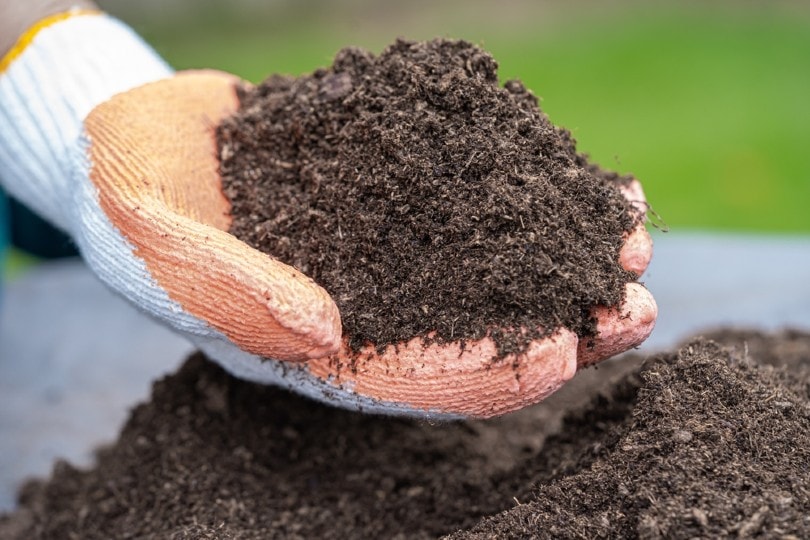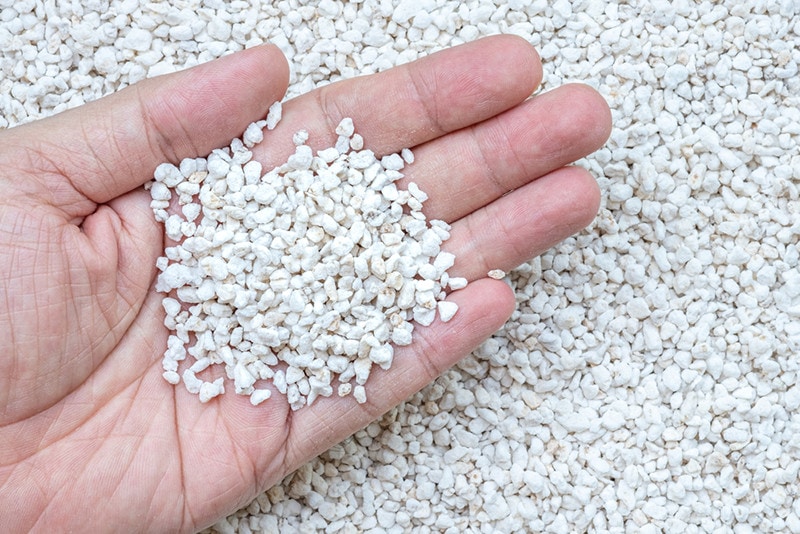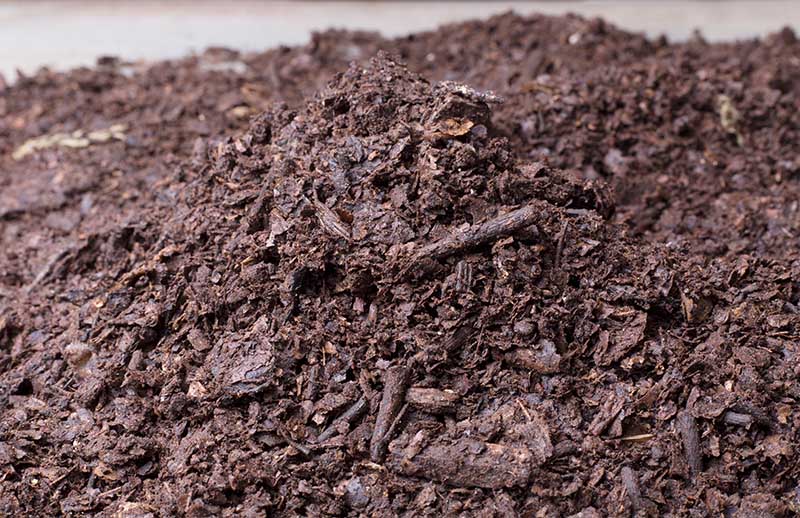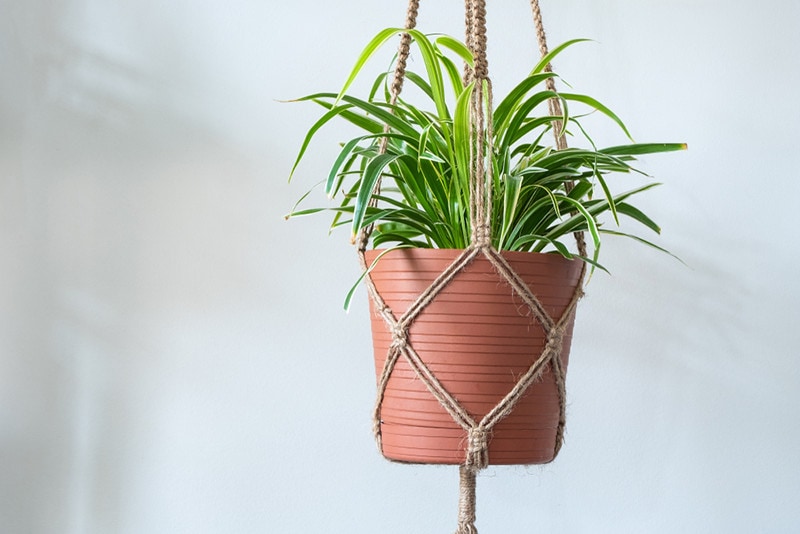How to Make Potting Soil for Spider Plants (Step by Step Guide)
-

- Last updated:

Often called the ribbon plant or the spider ivy, the spider plant is a go-to choice as an ornamental houseplant. If you want to see your spider plants grow and flourish, the potting soil needs to be perfect. Otherwise, the tips will turn yellow, the stems will wither, and root rot will take over.
And, while you can, of course, buy commercial potting soil, it’s always better to make your own. By following our recommendations on drainage/aeration, picking the right ingredients, and trying out different recipes, you’ll be able to not only stimulate growth but also save a buck or two. Here’s how to do it!
| Time Needed: | 3–4 hours (on average) |
| Estimated Cost: | $35–50 for the materials |
| Difficulty Level: | Beginner/Moderate |
What You’ll Need for the Job
The ingredients are the heart and soul of any potting soil. Depending on what kind of mix you’re going for, you’ll need stuff like peat moss, pine dust, perlite, vermiculite, and/or worm casting. As for the tools, a spade, hand cultivator, and some work gloves should get you started. Here’s the full list of things required to make potting soil for spider ivy:
| Tools Required | Materials/Products Needed |
| Spade or shovel | Peat moss or coconut coir |
| Trowel and hand cultivator | Pine dust/bark or leaf mold |
| Container and watering can | Perlite or vermiculite |
| Old clothes and work gloves | Worm casting or compost |
The 7 Simple Steps to Make Potting Soil for Spider Plants
1. Start With Proper Drainage
When the soil mix has poor drainage, that leads to root rot. The same happens when you’re watering the plant too frequently. And for spider ivies, drainage is critical for steady growth. So, how do you avoid waterlogging? The solution is simple: use ingredients with enhanced drainage capabilities. Perlite is a popular choice for many gardeners.
It’s cheap, widely available, and does a great job of keeping the soil dry. Vermiculite is a decent alternative, but it’s not as effective. Coarse sand and pumice rocks can get the job done as well. As a bonus to improved drainage, you’ll get a boost to aeration. Plus, it will be easier for the roots to navigate through the soil.

2. Ensure Moisture Retention
Abnormally low humidity levels make the soil dry. That, in turn, leads to brown tips. Now, when the soil is well-drained, that’s a good thing, but it also means the water won’t stay in the pot for long. To battle that, use peat moss or coconut coir as the main ingredient. They’ll retain both moisture and nutrients. Sometimes, tip burn is caused by moss, salt-rich water, and fluoride or chlorine.
To fix that, all you have to do is flush all the chemicals and salts out. Grab a large enough can and keep pouring water into the soil until it starts to escape from the holes in the pot. Or, add some limestone to the bottom of the container. We recommend making one part of the potting soil peat moss or coco coir.
3. Get the Right Ingredients
Here’s a quick look at the most common potting soil ingredients:
- Peat moss – Impressive moisture holding capacity, keeps the pH levels balanced, helps with aeration
- Coconut coir – Lightweight, pH neutral, cheap, prevents root rot, better at moisture retention than peat moss
- Perlite/vermiculite – Great for aeration; perlite is better at drainage than vermiculite, and it’s also naturally pasteurized
- Worm casting – Nutrient-rich, contains beneficial bacteria, boosts the pH levels, strong against diseases
- Compost – Very cheap, good for beneficial microbes, keeps many diseases from developing
- Bark/pine – Degrade slowly, prevent slumping, retain carbon, and work well with other components
- Leaf mold – Adds organic matter, improves water and air movement, good for microorganisms
Organics should make up at least 25% of the mix. That way, the spider plant will have enough minerals and other nutrients to grow. Worm casting, compost, and some bark or pine needles are the safest bet. This is where the ribbon plant will get its NPK nutrients.

4. Don’t Forget About Soil pH
Now that you’ve got the potting mix all setup, don’t forget about acidity. For spider ivy, natural pH levels in the 6.0–8.0 range are ideal. But if you go a bit higher or lower than that, the plant will be able to handle it. This is important: peat moss is capable of significantly boosting soil acidity, making it reach dangerously high levels (coir is pH neutral). Again, limestone is the best remedy against this.
And if you’re dealing with the opposite (the potting soil is too alkaline), increase the peat moss percentage to 30%. Aluminum sulfate is also known to increase pH levels. When the soil is more acidic than it needs to be, that robs the spider ivy of vital components, including iron. So, if the leaves are turning yellow, that means it’s time to add some lime.
5. Aeration Comes Next
Good news: you don’t necessarily have to add any extras for aeration. Peat moss, coir, and perlite already do a fantastic job of keeping the soil well-aerated. But why does this matter, anyway? Without aeration, the soil won’t contain nearly enough oxygen for the plants. Furthermore, the roots will have a much harder time reaching nutrients.
That’s why regular soil is NOT recommended here. It’s too thick for the spider plant’s roots and will make them rot. Finally, soil aeration removes toxic CO2 from the soil.
6. Make Sure to Repot the Plants
Move the spider plant to a different pot once in 1–2 years. If you skip that part, the ivy’s growth rate will slow down. More than that, since the plant will be much bigger than it was when you first planted it, there won’t be enough nutrients in the potting mix to support it. So, keep your eyes on the soil.
If you notice the roots “poking through” the drainage holes, that’s your cue for repotting the plant. The spring and early summer are the best times of the year for this. If you do it in fall or winter, that might negatively affect the growth. One more thing: always use fresh potting mix in the new container.
7. Try Different Potting Soil Recipes
The ribbon ivy is one of those plants that can easily grow and thrive in general-purpose potting soil. However, there’s always room for perfection, and if you want to ensure accelerated growth, there are quite a few tried-and-true recipes for it. Here are our top picks:
Recipe number 1:
- 1 part peat moss/coco coir
- 1 part perlite or vermiculite
- 4 parts pine bark
Recipe number 2:
- 3 parts organic potting mix
- 1 part perlite or vermiculite
- A sprinkle of coconut coir or orchid barks
- A sprinkle of peat moss, compost, or worm casting

Recipe number 3:
- 2 parts cactus/succulent mix
- 1 part coir or peat moss
- 1 part compost
- Worm casting (optional)
Recipe number 4:
- 1 part sterilized sand
- 1 part regular sand
- 1 part leaf mold

Recipe number 5:
- 4 parts commercial potting mix
- 1 part worm casting/compost
- 1 part perlite or vermiculite
When you have all the right components, it all comes down to finding the perfect combinations. As long as the soil is well-drained, moist, aerated, and organically rich, sustained growth will be guaranteed. So, don’t be afraid to experiment but always remember what kind of potting soil the spider ivy prefers. Loamy soil or a commercial potting mix will serve as the perfect foundation.
Spider Plants: A Quick Look
An ornamental plant that can easily handle both indoor and outdoor environments, the spider ivy is a tough, resilient plant. It’s strong against diseases, infections, and pests. Aphids and mites can be a problem, but they’re not a big threat to this ivy. It’s recognized as one of the strongest, easiest to cultivate, and low-maintenance houseplants in the US. The ribbon plant grows best when exposed to indirect light.
When watering the soil, be generous, yet don’t let the spider ivy become soggy. More than that, you should let the soil go dry for a while between the watering sessions. And what about the temperatures? The spider plant is a big fan of cooler temps. Indoors, the ideal temperature for it is 70–90°F. The plant can survive at 35°F, but you won’t see much growth.

What Is Potting Soil? The Definition
Known as potting compost in the UK, potting soil is a mix of organic materials—a growing media for plants. Strangely enough, there’s usually very little to no soil in a potting mix. As a result, it’s much lighter than topsoil and easier to carry around. That doesn’t mean you’re not allowed to combine potting soil with regular soil, of course.
Now, peat moss is the foundation for most potting mixes. It excels at moisture retention and aeration. Peat moss is a 100% natural product formed during the decomposition of various sphagnum moss species. But it’s not the only ingredient out there. You can always replace or mix it with one of the components that we mentioned earlier.
Conclusion
There’s something incredibly rewarding about making your own potting soil and watching your plants grow. By hand-picking what kind of moss, dust, or compost to use and mixing it all, you can create just the right mix for spider plants and help them thrive. Drainage, moisture retention, proper air circulation, and soil acidity are the key factors here.
If you remember to repot the plants at least once in 2–3 years and water them adequately, you’ll soon master the fine art of making homemade soil. And, since the ribbon plant is a low-maintenance, easy-to-grow ivy that can handle tough conditions, it’s the perfect plant for trying out different recipes until you find the right one!
- IFAS.UFl.Edu – Spider Plant Production Guide
- WinsconsinAgriculture.Edu – Chlorophytum comosum
- ClemsonCooperativeExtension.Edu – Spider Plant
- NCStateExtension.Edu – Spider Ivy/Ribbon Plant
- Web.Extension.Illinois.Edu – The Basics
- AgriInfo.In – Importance Of Soil Aeration
- FloristKid.Com – Best Soil For Spider Plants
- UniversityOfFlorida.Edu – Homemade Potting Mix
- Pepin.Extension.Wisc.Edu – Leaf Mold Compost
- Bio.Brandeis.Edu – Sphagnum Moss
Featured Image Credit: Bozhena Melnyk, Shutterstock
Contents


